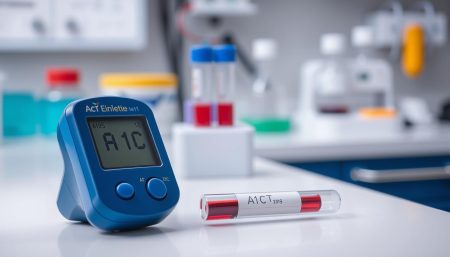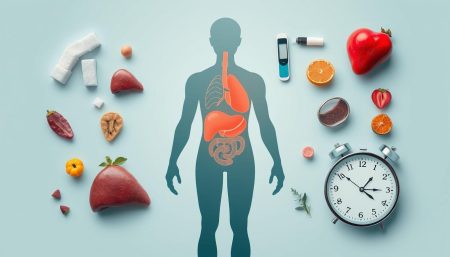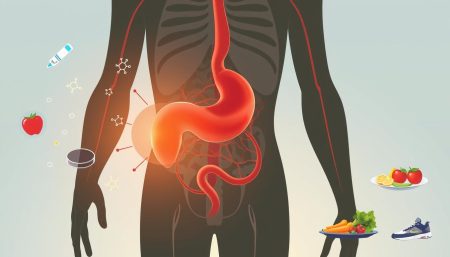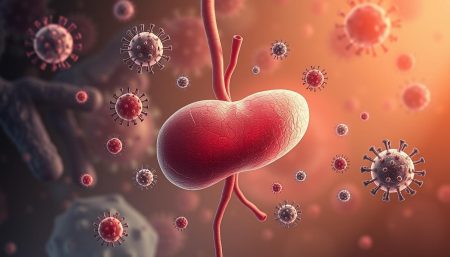Starting to understand type 1 diabetes reveals a lifelong challenge. It requires careful diabetes management and detailed care. People with this condition face many health issues that need constant attention.
Keeping a balance in life with this complex condition is vital for well-being. We aim to help those with this chronic illness with effective diabetes mellitus tipo 1 care tips. We want to guide them with knowledge, lifestyle changes, and new medical treatments.
Let’s explore the details of this condition and find ways to live well with it. Get ready for a deep dive into thriving with type 1 diabetes.
What is Diabetes Mellitus Tipo 1?
Diabetes Mellitus Tipo 1, also known as type 1 diabetes, is an autoimmune disease. It attacks the insulin-making beta cells in the pancreas. This condition mainly affects kids, making diabetes in children a big worry.
Type 1 diabetes is different from type 2. Type 2 is linked to lifestyle and genes. But type 1 diabetes happens no matter what lifestyle you have. It makes the body unable to make insulin, a key hormone for blood sugar control. So, people with type 1 diabetes need insulin their whole lives.
- Autoimmune attack leads to the loss of beta cells
- Lifelong dependency on administered insulin
- Typically diagnosed in young individuals, earning it the name juvenile diabetes
Without insulin, people with type 1 diabetes can’t survive. This shows how important insulin is. Type 1 diabetes starts quickly and is very serious. It’s much worse than type 2 diabetes, which starts slowly.
Knowing the differences helps manage the disease better. It also helps doctors find new treatments for type 1 diabetes.
Diagnosing Type 1 Diabetes
Diagnosing Type 1 diabetes involves several steps and tests. It’s important to catch diabetes symptoms early. This helps manage the disease better and improves health outcomes. Doctors look at symptoms and run specific tests to make a diagnosis.
Diabetes symptoms like being very thirsty, needing to pee a lot, and losing weight without trying are key. These signs mean it’s time to test for diabetes. Doctors use different tests to find out if someone has Type 1 diabetes. Here’s a table that shows what tests are used:
| Test | Description | Significance |
|---|---|---|
| Fasting Blood Glucose (FBG) | Measures blood sugar after a period of fasting | Diabetes diagnosis is confirmed if levels are high on two separate occasions. |
| Hemoglobin A1C | Gauges average blood sugar levels over 2 to 3 months | A level of 6.5% or higher indicates diabetes. |
| Autoantibodies Test | Detects immune proteins that attack insulin-producing cells | Essential for confirming Type 1 diabetes as it distinguishes from Type 2. |
Spotting diabetes symptoms early is key to managing Type 1 diabetes. Knowing the signs helps patients and their families get help fast. This leads to better treatment plans. So, diagnosing diabetes is not just about finding the disease. It’s also about planning the best care.
Causes and Risk Factors of Juvenile Diabetes
Understanding diabetes risk factors is key to spotting and maybe preventing Type 1 diabetes in kids. Both genetic predisposition and diabetes environmental factors are important in this autoimmune disease.
Genetics and Family History
Genetics play a big role in Type 1 diabetes. Some genes passed down through families increase the risk of getting Type 1 diabetes. This is why knowing your family’s health history is very important.
Environmental Triggers
Genetics set the stage, but diabetes environmental factors often start the disease. Viruses and not enough vitamin D can lead to Type 1 diabetes, studies show. These factors can start an autoimmune attack in people who are already at risk, destroying insulin-making cells in the pancreas.
The Immune System’s Role in Diabetes Mellitus Tipo 1
In the complex world of type 1 diabetes pathogenesis, the immune system and diabetes are deeply connected. This connection is through an autoimmune response. This means the body’s defenses attack its own cells, a major failure in immune control.
This attack mainly targets the insulin-making beta cells in the pancreas. This is a key part of why people with type 1 diabetes can’t make insulin.
Understanding why the immune system attacks these cells is vital. It’s important for finding ways to stop or slow this autoimmune response.
New research offers hope for changing how the immune system interacts with these cells. By protecting these cells or introducing new ways to control them, we might prevent type 1 diabetes. This research shows how complex diabetes is and how it involves many factors.
Signs and Symptoms of Insulin-Dependent Diabetes
It’s important to know the early signs of type 1 diabetes. This knowledge helps in getting a diagnosis and managing the condition. Early detection and action can greatly improve health outcomes.
Recognizing Early Warning Signs
There are several signs that indicate type 1 diabetes. Feeling extremely hungry and losing weight without trying are common signs. Also, needing to urinate a lot and feeling thirsty all the time are signs that your body is dealing with high blood sugar.
Other signs might include feeling very tired and irritable. These symptoms are often seen as just part of daily life, but they can be important.
When to Seek Medical Attention
Some symptoms need quick medical help to avoid serious problems. If you or someone you know is getting very sick fast, with symptoms like nausea, vomiting, or acting strangely, get help right away. Quick action can stop serious health issues and keep you stable.
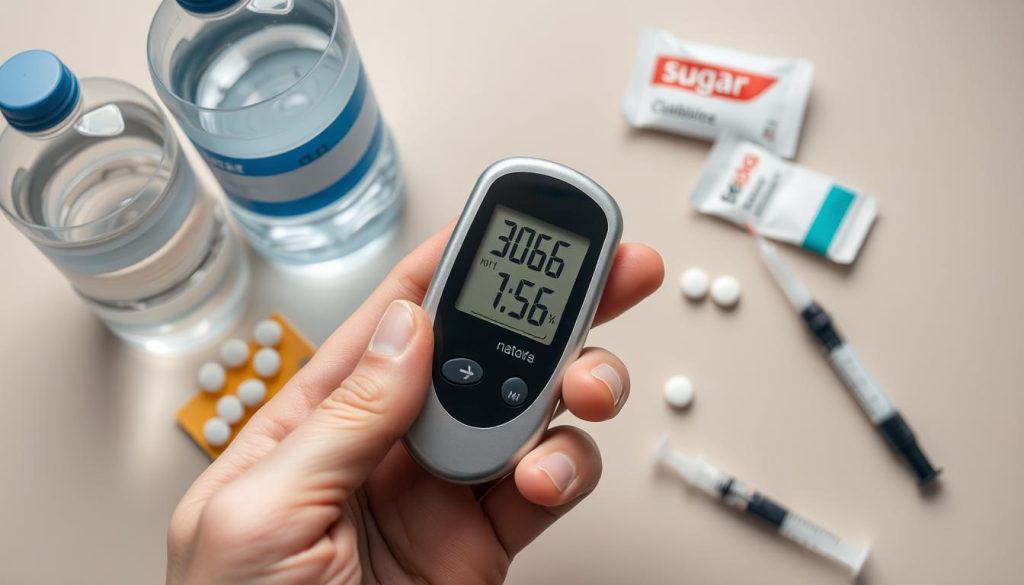
| Symptom | Early Detection | Urgency for Medical Attention |
|---|---|---|
| Extreme hunger | High | Monitor and consult |
| Unexplained weight loss | High | Consult immediately |
| Excessive thirst and urination | High | Monitor and consult |
| Fatigue and irritability | Medium | Monitor and consult if persisted |
| Nausea, vomiting, altered mental state | Immediate detection | Seek immediate medical attention |
If you notice these signs, it’s key to keep an eye on them and see a doctor. Early action can make a big difference in managing diabetes. Catching these signs early helps you take care of your health better.
Monitoring Blood Sugar Levels
Keeping blood sugar levels in check is key to managing diabetes well. Regular checks help people with diabetes make better food choices, exercise, and take the right medicine. This helps avoid sudden problems and keeps their health stable over time.
Today, we have many tools to track blood sugar levels. From simple glucometers to advanced systems that monitor glucose all day, these tools are vital. They help prevent high or low blood sugar by giving important data.
- Traditional Glucometers: These devices need a small blood sample from a finger prick. They are easy to carry and affordable, making them a good choice for many.
- Continuous Glucose Monitoring Systems: CGMS give readings all day and night. They show blood sugar trends without needing to prick your finger many times.
Choosing the right glucose monitoring method depends on several factors, including the individual’s specific health needs, lifestyle, and doctor’s recommendations. Good glucose monitoring is essential for tight blood sugar control. It helps lower the risk of diabetes-related problems.
Understanding and using these tools well is critical for stable blood sugar levels. Regular checks and adjusting care plans help keep health in check. This way, people with diabetes can control their health better and avoid long-term diabetes complications.
Treatment Options for Type 1 Diabetes
Managing type 1 diabetes needs a mix of approaches, with insulin therapy at the core. But, knowing and using different treatments can really improve life quality and health outcomes.
Teaching patients about managing diabetes is key. It means learning to check blood sugar, spot low or high blood sugar, adjust insulin, and change lifestyle habits. Every patient needs a treatment plan that fits their life and health.
Here’s a look at the main parts of treating type 1 diabetes:
- Daily Insulin Injections or Pump: This is essential because the body can’t make insulin anymore.
- Continuous Glucose Monitoring (CGM) Systems: These devices give real-time glucose level info, helping with better insulin dosing.
- Dietary Adjustments: Eating a balanced diet helps control sugar levels and prevent problems.
- Regular Physical Activity: Exercise boosts insulin sensitivity and overall health.
- Routine Healthcare Consultations: Regular visits with healthcare providers help adjust the treatment plan as needed.
Advanced insulin therapy has improved a lot. Now, there are many types of insulin, like rapid-acting, long-acting, and premixed. You can also choose how to take it, from syringes to pumps and pens.
| Type of Insulin | Onset | Peak | Duration |
|---|---|---|---|
| Rapid-acting | 15-30 min | 1-2 hrs | 3-5 hrs |
| Long-acting | 1 hr | No peak | Up to 24 hrs |
| Premixed | Varies | Varies | Varies |
It’s important to know about these options and how they fit into a treatment plan. This knowledge is key for effective diabetes treatment strategies.
Insulin Therapy Explained
Insulin therapy is key in managing diabetes by controlling blood sugar levels. This section explores the different insulin types and delivery systems. It aims to give a full understanding of how they help people with diabetes.
Types of Insulin
Insulin types vary based on how fast they start working, their peak, and how long they last. Here are the main insulin types used in therapy:
- Rapid-Acting Insulin: Works fast, starting in 15 minutes and peaking in about 1 hour. It’s great for mealtime blood sugar spikes.
- Long-Acting Insulin: Releases slowly over 24 hours. It keeps insulin levels steady all day and night.
- Premixed Insulin: Mixes rapid-acting and intermediate-acting insulin. It’s easy to use, covering blood sugar increases during meals and all day.
Insulin Delivery Methods
There are many insulin delivery systems to fit different lifestyles and preferences:
- Syringes: A classic method using a needle and syringe for injecting insulin.
- Insulin Pens: Portable, pre-filled devices for easy insulin use.
- Insulin Pumps: A system for continuous insulin infusion. It’s adjustable based on blood sugar and meals.
Choosing the right insulin types and delivery systems is vital for effective therapy. It should match individual needs and medical guidance.
Managing Diet and Nutrition
Effective management of type 1 diabetes meal planning is key to keeping blood sugar stable. It also boosts overall health. Important steps include learning about carbohydrate counting, choosing whole, nutrient-rich foods, and timing meals with insulin.
A balanced diabetes diet is more than just cutting out foods. It’s about creating a flexible, doable eating plan for the long haul. Here are some key tips:
- Carbohydrate counting to match insulin dosage effectively.
- Prefer complex carbohydrates, like whole grains, over simple sugars for better blood glucose control.
- Include high-fiber foods to help moderate blood sugar spikes.
- Regularize meal times to sync with peak insulin action.
Education in nutritional management is also critical. Knowing how foods affect blood sugar and adjusting your diet can help. Planning meals and snacks ahead can also lower risks of high and low blood sugar.
Exercise and Lifestyle Changes
Integrating diabetes and exercise is key to managing diabetes well. Regular physical activity boosts insulin sensitivity and improves heart health. It’s vital to match your exercise with your lifestyle to keep blood sugar levels in check.

People with diabetes should adjust their insulin doses with their workout plans. This careful planning helps avoid blood sugar swings during exercise.
- Regular monitoring of blood sugar levels before, during, and after exercise.
- Adjustment of food intake based on the intensity and duration of the activity.
- Proper hydration to avoid blood sugar fluctuations.
Sticking to a regular exercise routine is great for diabetes health. It includes aerobic, strength, and flexibility exercises for a well-rounded fitness plan.
| Exercise Type | Benefits | Recommended Frequency |
|---|---|---|
| Aerobic Exercise | Improves heart health and insulin sensitivity | 3-5 times per week |
| Resistance Training | Increases muscle strength, enhances glucose metabolism | 2-3 times per week |
| Flexibility Exercises | Improves muscle elasticity and joint health | Daily or as needed |
Following these exercise tips can greatly improve your lifestyle if you have diabetes. Regular physical activity is essential for a better quality of life and managing diabetes.
Understanding and Preventing Hypoglycemia
Managing diabetes means staying alert to hypoglycemia. Knowing the signs and acting fast can greatly improve life quality.
Identifying Hypoglycemia Symptoms
Spotting low blood sugar early is key. Look out for confusion, dizziness, sweating, and fast heartbeats. Quick action is vital to avoid serious issues.
Immediate Treatment for Low Blood Sugar
Seeing hypoglycemia symptoms means acting fast. Eating quick carbs like glucose tablets or juice helps right away.
For long-term control, adjust meals and meds with doctor advice. This helps keep blood sugar stable.
| Immediate Action | Subsequent Steps |
|---|---|
| Consume 15-20 grams of fast-acting carbohydrates | Reassess blood sugar after 15 minutes |
| If necessary, repeat carbohydrate intake | Have a snack with carbohydrates and protein if next meal is an hour away |
Dealing with Hyperglycemia
Managing hyperglycemia is key for those with type 1 diabetes. It helps avoid serious diabetes complications. Knowing what causes high blood sugar and how to fix it can greatly improve life quality and lower health risks.
Insufficient insulin is a main reason for hyperglycemia in diabetes patients. Insulin controls blood sugar. If the dose or timing is off, blood sugar can rise. It’s vital to check blood sugar often and adjust insulin as needed.
- Review daily blood glucose levels
- Adjust insulin doses based on carbohydrate intake and physical activity
- Plan meals carefully, incorporating a balanced mix of nutrients
To quickly lower high blood sugar, more insulin is given. The exact amount is based on a ‘correction factor’ or ‘sensitivity’ from a doctor. This helps get blood sugar back to a safe level.
For long-term control, making lifestyle changes is important. This includes:
- Regular physical activity
- Maintaining a dietary regimen recommended by a nutritionist
- Regular consultation with healthcare providers to adjust diabetes care plans
By understanding and using these methods, the risk of high blood sugar drops. This can prevent serious diabetes complications. It helps keep health stable for those with type 1 diabetes.
Diabetes in Children: School and Social Life
Managing diabetes in children is a big job. It involves many parts of their life, like school and friends. A good school diabetes care plan is key. It helps keep them healthy and supported when they’re not at home.
Communicating with School Staff
Good juvenile diabetes management starts with clear talks between parents and school staff. They need to make a school diabetes care plan that fits the child’s needs. This plan should cover things like insulin shots, emergency care, and checking blood sugar.
Parents should talk to teachers, nurses, and school leaders about their child’s needs. Making sure everyone knows the school diabetes care plan helps keep kids safe and confident.
Supporting Your Child’s Independence
As kids get older, they should learn to handle their juvenile diabetes management on their own. Teaching them simple tasks like spotting blood sugar changes helps them grow. They’ll learn to do more, like figuring out insulin doses, which makes them feel more in charge.
This independence helps them fit in better at school and with friends. It lets them manage their diabetes without feeling left out.
| Age Group | Skills Taught | Expected Outcomes |
|---|---|---|
| 5-8 years | Recognizing symptoms of high/low sugar | Basic awareness of condition |
| 9-12 years | Testing blood glucose, understanding when to eat | Self-monitoring and decision-making |
| 13-18 years | Calculating insulin doses, managing diet | Full self-management |
By teaching kids with diabetes and supporting their independence, parents and schools help a lot. Keeping up with changes and talking often is important for good juvenile diabetes management.
Emotional and Psychological Support
Living with diabetes is tough, affecting both body and mind. It’s key to understand the importance of emotional support in managing diabetes. This support helps in better handling the condition and improves life quality.
Managing type 1 diabetes can be stressful and anxiety-filled. Family, friends, and doctors are vital in providing support. Talking openly about health and feelings helps reduce feelings of loneliness or sadness.
- Joining support groups where experiences and strategies are shared can be invaluable.
- Engaging in regular consultations with mental health professionals to equip oneself with strategies for effectively coping with diabetes.
- Practice mindfulness and stress reduction techniques such as yoga or meditation to help maintain a balanced mental state.
Adding these practices to your daily life can ease the mental strain of diabetes. Building strong support networks and using mental wellness resources can greatly help. This way, people can better cope with diabetes.
Advancements in Diabetes Treatment
The world of diabetes treatment is changing fast. New insulin technology and a focus on the future of diabetes care are leading the way. These changes could make managing diabetes easier and even change how we treat it.
Emerging Technologies in Insulin Delivery
New insulin technology is making a big difference. Smart insulin pens let you track your doses and adjust them easily. Closed-loop insulin pumps can even adjust insulin levels automatically, acting like an artificial pancreas.
Future of Diabetes Management and Care
The future of diabetes care looks bright. New treatments like pancreas transplants and beta-cell encapsulation could be game-changers. They aim to fix the root cause of diabetes, not just manage it.
| Technology | Description | Impact on Diabetes Care |
|---|---|---|
| Smart Insulin Pens | Electronic pens with dose recording capabilities | Improves dosing accuracy and patient compliance |
| Closed-Loop Systems | Automated insulin delivery in response to glucose levels | Mimics pancreas function, reducing management burden |
| Pancreas Transplants | Surgical replacement of a donor pancreas | Can potentially eliminate the need for insulin therapy |
| Beta-Cell Encapsulation | Implantation of insulin-producing cells protected from the immune system | Targets autoimmune aspect of diabetes, promising long-term benefits |
These advancements are not just improving life for people with diabetes. They’re also paving the way for a future where diabetes might be treatable or even curable.
Creating a Diabetes Care Team
Managing diabetes well needs a team effort. This team is more than just health care professionals; they are your health partners. Knowing who’s on your team can help you manage your diabetes better and live a better life.
The endocrinologist is a key team member. They are experts in hormones and diabetes. Diabetes specialists also play a big role, helping with daily management.
Nurses and certified diabetes educators teach you how to manage your diabetes. They cover topics like insulin use and how diet affects your blood sugar. Having a dietitian who focuses on diabetes care is also important for nutrition advice.
- Diabetes Specialists: They give personalized advice and treatment plans.
- Psychologists or Counselors: They help with the emotional side of managing diabetes.
- Podiatrists: They focus on foot health, which is very important for diabetes patients.
- Ophthalmologists: They are key for eye exams to prevent diabetes-related eye problems.
It’s important for your diabetes care team to work together and talk often. Regular team meetings can help prevent problems and adjust treatments as needed. This gives you a care plan that fits your needs.
Creating a strong diabetes care team is more than just gathering health care professionals. It’s about building a support network that helps you manage your diabetes with confidence. The right team will understand diabetes’s complexities and give you the support you need to live with this chronic condition.
Final Thoughts on Managing Diabetes Mellitus Tipo 1
We’ve looked at the many ways to manage diabetes mellitus tipo 1 effectively. It’s all about understanding the condition, spotting early signs, and sticking to a treatment plan. Living well with diabetes means balancing medical care, diet, and lifestyle.
At the heart of managing diabetes mellitus tipo 1 is keeping blood sugar levels in check. This is done through regular checks and insulin, along with healthy eating and exercise.
But there’s more to a diabetes lifestyle than just managing the disease. It’s about living a full and healthy life. Everyone’s journey with diabetes is different. Getting support from doctors, family, and friends is key to facing daily challenges.
People with diabetes need to stay informed and take charge of their health. With the right information and support, managing diabetes can be empowering. This article provides a starting point for taking control of the disease and living a rewarding life, despite its challenges.
FAQ
Q: What exactly is Diabetes Mellitus Tipo 1?
A: Diabetes Mellitus Tipo 1, or Type 1 diabetes, is an autoimmune disease. It happens when the pancreas doesn’t make enough insulin. This hormone is key for controlling blood sugar. It often starts in kids and young adults.
Q: How is Type 1 diabetes different from Type 2 diabetes?
A: Type 1 diabetes is caused by an autoimmune reaction. It destroys the cells that make insulin. This makes it insulin-dependent. Type 2 diabetes, on the other hand, is linked to lifestyle choices. It starts with insulin resistance, where the body doesn’t use insulin well.
Q: What are the common symptoms of Type 1 diabetes in children?
A: Kids with Type 1 diabetes often feel very thirsty and need to pee a lot. They might also feel hungry, tired, have blurry vision, and lose weight. If you notice these signs, see a doctor right away.
Q: How is blood sugar monitored in individuals with Type 1 diabetes?
A: People with Type 1 diabetes can check their blood sugar with glucometers. These need a finger prick. Or, they can use continuous glucose monitoring systems. These give real-time blood sugar levels and trends.
Q: What treatment options are available for Type 1 diabetes?
A: The main treatment for Type 1 diabetes is insulin therapy. This can be through injections or an insulin pump. Eating right and managing lifestyle are also important.
Q: What types of insulin are used to treat Type 1 diabetes?
A: There are different types of insulin, like rapid-acting and long-acting. The right one depends on your blood sugar patterns and lifestyle.
Q: How can diet affect diabetes management?
A: Diet is very important for managing diabetes. Counting carbs and choosing low glycemic foods helps keep blood sugar stable.
Q: Why is exercise important for individuals with Type 1 diabetes?
A: Exercise makes insulin work better and improves heart health. But, it’s important to watch blood sugar levels. Adjust insulin and food to avoid blood sugar problems during and after exercise.
Q: What should I do if I experience symptoms of hypoglycemia?
A: If you feel shaky, confused, or dizzy, it’s a sign of low blood sugar. Eat fast-acting carbs like glucose tablets or juice. Then, get medical help.
Q: How can children with Type 1 diabetes manage their condition at school?
A: Make a diabetes care plan with school staff. They need to know how to monitor blood sugar, spot signs of low or high blood sugar, and give insulin.
Q: What role does emotional and psychological support play in diabetes management?
A: Emotional support is key because diabetes can be tough mentally. Join support groups, talk to counselors, and share your feelings with your healthcare team.
Q: Are there technological advancements that may improve the management of Type 1 diabetes?
A: Yes, new tech like smart insulin pens and continuous glucose monitoring systems are helping. They make managing blood sugar easier and better.
Q: What professionals should be included in a diabetes care team?
A: Your diabetes care team should have an endocrinologist, diabetes educator, dietitian, and maybe a counselor. Working together, they provide the best care.













